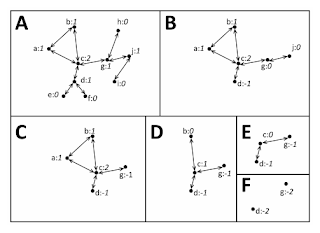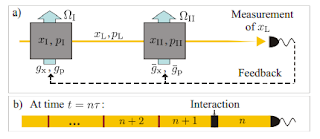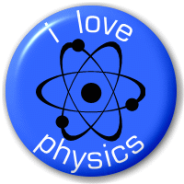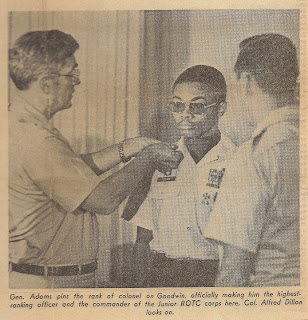By Keith D. Young
I was born in 1976 and outside of “Blaxploitation” movies, there were no African American action or science fiction stars. My favorite movies included Tron, Superman, The Last Star Fighter, and Dune. The heroes in those movies had super powers, super intelligence, and had to dig deep to overcome extra-ordinarily difficult situations, often at great personal cost. It is worth noting here that the stars of these movies were all Caucasian males, and none of them looked like me. Hell, in most of the movies with a futuristic theme there was not even a Black person cast as an extra! As if, as Richard Pryor so eloquently put it, white people were not expecting us to be in the future.
It is no secret that many action, fantasy and science fiction movies contain ancient magical and mythological elements incorporated into the fabric of their stories; to see titans, gods, goddesses and fairies as characters in modern day cinema is a fairly commonplace occurrence – with one caveat, these characters almost never appear in movies written or directed by Blacks, or with an all Black cast.
When it comes to Black cinema we have few choices for our movie going pleasure. We have comedies, action comedies, the all important “Jesus Will Fix It” film and “Hot Ghetto Mess Drama,” (usually not the good kind), and last but not least is the “Catharsis Drama” – movies about profound suffering and abuse and how the characters where able to somehow carry on after being both victimized and traumatized. Few Black writers explore the realm of science fiction, fantasy, or create movies with a magical or mythological theme.
To add levels of depth and subtle complexity to their stories, adept writers and directors are able to use the archetypical and symbolic elements of the heroes and heroines of ancient mythological stories and folk and fairy tales. Many times these elements are used so skillfully as to be hardly recognized by the majority of the movie going public, but to the trained eye, these elements are obvious. However it does take a study of classical literature, world mythology and symbology in order to use these elements with any level of effectiveness. Study that many burgeoning African American film makers seem all too willing to ignore in their movie making process, as these elements are often sorely lacking in the plots and storylines of Black cinema.
But it seems like all that is changing with Will and Jaden Smith’s Sci-Fi epic “After Earth”. The After Earth screenplay was written by Gary Whitta and M. Night Shyamalan, with the story by Will Smith, tells the type of story that Black entertainment hasn’t seen the likes of in a very, very long time.
Critics dislike this movie because they know what Mr. Smith is trying to accomplish with this type of movie, and they don’t like it. While Smith’s traditional audience may be slow to co-sign this movie for two reasons, one is they are not used to seeing African Americans play these types of roles, (although they will pay top dollar to watch Tom Cruise, Brad Pitt and Keanu Reaves play these roles over and over again,) and two, they don’t really understand the themes portrayed in this movie due to the fact that as a culture, we were stripped of our initiatory practices and our stories, and as a result we are used to seeing these types of roles played by White or Asian actors and actresses. Our legends and folklore have been demonized through religion and western culture, and so it seems we shun the magical and fantastical images of ourselves as sorcerers, demigods and heroes.
Below I will outline various elements of the movie “After Earth” that make this movie worth seeing over and over again. Fathers, if you have been looking for a movie to take your sons to that will help you to begin a profound conversation about rites of passage and growing into a man, you’ll want to check this out.
!!!SPOILER ALERT!!! – We are going to be discussing the story and plotline from this movie and by doing so parts of the actual story are going to be revealed. If you don’t want to spoil the movie before you’ve seen it, STOP NOW, and then come back after you’ve seen it to participate in this analysis.
Initiation
Let’s begin by taking a look at the theme of initiation that runs throughout “After Earth”.
Initiation was important in indigenous tribes because it was a system by which the young boys and girls of a given culture or tribe were guided through in order to educate, prepare and move them through the phase of childhood into adulthood and all the attendant rites and responsibilities which adulthood entailed.
Training
Initiation always begins with education and training, and in the movie we begin with the main character training with his military academy class. Readers will take note that cadets in the military go through a process of initiation designed to strip them of their life as a civilian to remold them as a soldier, and make no mistake, this system of initiation was taken from the ancient indigenous cultures of Africa and passed down through other cultures and societies throughout the world.
Training involves physical and mental exercise and tests designed to give initiates/cadets control over their bodies, their emotions and their minds.
It is at this point in the movie that we find that young Kitai, while exhibiting impressive physical abilities is lacking in emotional and mental control, issues which he will be forced to deal with later on in the movie.
Below is an outline of initiatory steps as experienced by the ancients and portrayed in “After Earth”
- Trek Through Nature in Solitude With a Mission to Complete
- Initiate Versus Nature, Beasts, and Self (FEAR)
- Initiate must face and overcome several trials in order to reach their goal (manhood)
- Endurance (Breathing linked to inhalers)
- Initiate must protect and ration limited amount of supplies, ie; food, water, medical
- Handling confrontation with potential danger.
It is worth noting here that Kitai failed his first encounter with danger (the monkeys)spectacularly! His Father told him to take control of his Power and watch what he creates. Kitai could not control his fear and anxiety and thus created a scenario where his life was in danger and forcing him to flee from the confrontation he created out of fear. In initiation, this is to be expected. The initiate must fail in order to understand what can result from recklessness and unchecked fear.
This same scenario played itself out in the movie Star Wars: The Empire Strikes Back, when Luke was sent into the "Cave of Darkness" by Yoda. Luke took FEAR into the cave with him and was confronted by it in the form of his Father, Darth Vader – though this Vader was purely a creation of Luke’s fearful thoughts.
- Facing medical emergency – poisoning by river leach and self administration of anti-venom.
- Surviving the elements – finding thermal heat vents and shelter to keep warm during cold spells.
- Defying Authority or “The System” in order to do what is right.
- Leap of Faith – Jumping off a cliff in the hopes that his brash act will carry him to his goal.
- Surviving a predator – The Raptor or Hawk representing Heru*
- Assisting Mother Nature to defend her children – fighting for the lives of the baby hawks against the attacks of the feline predators.
- Divine Aid – Initiate is pushed to his physical limits and thus transcends and is able to make contact with the spirit world where he is able to make peace with his dead sister and is given the aid and the protection of his spirit totem, the hawk.
- Initiate reaches physical goal but must still go higher in order to reconnect spiritually with his Father – Kitai finds the beacon however it does not send the signal. Out of anger and frustration he hears the spiritual voice of his Father telling him to take a knee, (lower his physical nature so that he may listen to his higher “spirit” nature) - his father then tells him that he must go higher, to the top of a nearby mountain so that he can send their beacon signal (plea for assistance) into the heavens.
- Initiate must face and overcome his fear here symbolized by the “Ursa” monster. Note here that "Ursa" is another name for a Bear which in some native tribes had to be faced and overcome by the young teens of the tribe in order for them to become men.
- Initiate has to enter the Cave of Darkness/Fear. It is here that the monster reveals itself to the initiate and must be fought to the death.
- Initiate is hurled into the abyss and must experience death. This death is not a physical one usually, but represents the death of the childish nature of the boy and the birth of the man. Fear, doubt and disbelief dies here , and the man, the warrior is able to be born. Initiate is put in mortal danger in order to force a change of mind and heart.
- Upon reaching the mountaintop, the initiate is able to completely conquer himself and as a result his own fear and is thus able to destroy the monster and send a beacon into the heavens to receive a rescue and a return to his heavenly home.
- By completing his task, the initiate is able to return home and redeem (save) his Father who was symbolically dead and in the underworld or in a deep soul sleep from which only the sons sacrifice could save him. **
Archetypes
The makers of “After Earth” also make use of archetypes to help them tell their story. According to the Concise Encyclopedia an “archetype” is “Primordial image, character, or pattern of circumstances that recurs throughout literature and thought consistently enough to be considered universal. Literary critics adopted the term from Carl Gustav Jung's theory of the collective unconscious. Because archetypes originate in pre-logical thought, they are held to evoke startlingly similar feelings in reader and author. Examples of archetypal symbols include the snake, whale, eagle, and vulture. An archetypal theme is the passage from innocence to experience; archetypal characters include the blood brother, rebel, wise grandparent, and prostitute with a heart of gold.”
Some of the archetypes that “After Earth” makes use of include, the “Father,” wise and valiant, yet fundamentally separated from his son, due to some perceived weakness or character flaw within the Son. The Son has let his Father down in a profound way, which has caused emotional and physical detachment.
The archetype of the "Son/Sun" in movies has the son following in his Father’s footsteps, while at the same time trying to make his own mark. He loves his Father but is resentful of him because he knows that he has fallen short of his Father’s expectations and/or achievements and he yearns to be like his Father and even to surpass him, in order to gain his love and respect. It is the Son’s job ultimately to redeem or save his Father, which makes him a suitable replacement for his Father, and which earns him the right to become a Father in his own right.
The steps that the Father and Son archetype takes in the movie “After Earth” are listed below.
- Son in search of Father
- Son fails to achieve an expected goal, and is judged by Father to be a failure. In After Earth this is unspoken, though in some stories the Father tells the Son outright that he is a failure.
- Father and Son embark on journey to attempt to mend the rift between them. (This is a mask for the beginning of the initiatory journey.)
- Father and Son encounter disaster, which only the two of them survive, leaving the Father severely wounded and having to rely on the Son for salvation.
- Father demands absolute obedience and adherence to his rules and commands as he does not fully trust the mental and physical abilities of the Son.
- Son is sent out to face the elements and enemies alone, but with the “spiritual guidance” of the Father. In After Earth, the spiritual guidance of the Father is represented by the com-link that keeps them in voice communication, and the “All Seeing Eyes” or cameras that the Father deploys in order to observe his Son’s progress and to watch out for danger.
- Son VS Father – The Son begins to question his Father’s authority when his Father exhibits a lack of faith that the Son can accomplish his goals. This is perhaps the MOST important part of the movie when Kitai chooses to outright disobey the direct order of his Father. The lesson is this: when authority is wrong or becomes oppressive, it must be disobeyed by the hero in order for justice to be done.
- Son Disobeys Father and is Cutoff, Cast Out or Cast Down. Being cut off from communication with the Father is symbolic of being cast down from heaven, which was shown literally as Kitai took a leap off the top of a waterfall in disobedience to his Father’s order that he return home. This event caused his communication link to his Father to be broken, leaving the Son alone and without guidance at a critical stage of the mission/initiation.
- Son Forced to Face Enemy (FEAR) Alone – In the movie fear is represented by the Ursa, which is a monster that tracks its enemies through pheromones released when its prey is afraid. This creature can literally smell your fear. It is only when the Son has mastered himself that he can overcome the fear inside him, which the Ursa beast in the movie symbolizes.
- Son Redeems (SAVES) Father, Returns Home a Man, Understands and Becomes Father.
The Heru Mythos
Every hero story you have ever read or saw played out on the silver screen is based on the mythos of Heru. Heru was an ancient African deity or Neter (force or aspect of nature) and the template for all good kings. You can read about his exploits in “The Passion of Osiris (Ausar)” and “A Tale of Two Brothers”. These tales come down to us from the land of ancient Kemet, now called Egypt.
In the myth Heru’s Father Ausar (Osiris) is betrayed and murdered by his jealous brother Set. Ausar is resurrected as the spiritual ruler of the underworld or afterlife. As a ruler, he is perpetually made to sit on a throne and cast his judgment on those who have recently passed on. [This is shown symbolically as Kitai’s Father Cipher was stuck in the chair inside the ship and using the ships camera’s (spiritual eyes) and the comm. Link (spiritual communication) to watch over and provide guidance to Kitai]
This throne motif is important as it was foreshadowed in After Earth by the soldier in the wheelchair, who approached the General and his Son. Upon approaching the General, the soldier declared that the General had saved his life and asked to be “stood up,” or in Biblical terms, “made upright”, by his companions so that he could make a proper salute to his hero (savior). This theme would play itself out again as the General would make the request “stand me up”, so that he could salute his son. This symbol represents the son redeeming or saving his Father.
Getting back to the mythos of Heru… after his father Ausar (Osiris) is murdered and his brother takes over the kingdom of Kemet, it becomes the mission of Heru and is Mother Auset (Isis) to get Heru on the throne as the rightful ruler of the land. Heru has to go through years of training under the auspices of his Mother Auset, His Aunt Nebhet (Nephtys) and the diminutive Bes who is the Neter of child birth, happiness and war. It is Bes who trains Heru to be a warrior. In the movie Star Wars Yoda played the part of the trainer (Bes) to Luke Skywalker (Heru).
The symbol of Heru was the Hawk. He was often depicted with wings and having the head or mask of a hawk. In the movie After Earth we see the relationship of the Hero to the Hawk in the “Leap of Faith” sequence where the hawk chases Kitai down and then carries him off to her nest to be food for her baby chicks. Kitai awakes while being nibbled on by the newborn chicks, but finds that the hawk nest is under attack by feline predators intent on eating the chicks. Kitai helps the hawk to defend the nest but fails to keep the predators from killing all of the baby birds.
The hawk mourns the loss of her baby chicks with a screech of rage and begins to follow Kitai in the air, which seems menacing in the beginning, but we find out later that the Hawk has bonded with Kitai and she later drags him to safety and protects him from the cold by using her own body heat to keep him from freezing. This is an obvious symbol of Kitai’s mythic relationship to Heru the Neter** of the Sun and the Sky… the original sky – walker.
After many contentious battles and adventures, Heru, with the help of his Mother would go on to gain rulership of the land of Kemet (Egypt) and thereby redeem his Father Ausar (Osirus).
It is important that you know that the story of Ausar (Osiris) and Heru (Horus) has been told and retold across the world and can be found in many variations, the names and characters and even some of the circumstances may change, but the root of the story remains the same. It is the duty of the Son to succeed his Father as ruler of the land or EARTH, but only AFTER he has proven himself worthy to do so. So you can see that the movie After Earth has a lot more depth to it than meets the casual eye.
There are many other examples of the mythological and archetypal symbolism that are incorporated into the movie After Earth that I was not able to touch on like the Mother as the “Queen of Heaven,” or the Sister as the “Spiritual Guardian” of her Brother. This movie is chock full of all the elements that make a great story and I for one feel that the story of After Earth was masterfully told. I’m looking forward to more of this type of movie from not only Will Smith and crew, but from other Black film-makers as well.
*Also known as Horus, Heru wan an ancient Kemetic (Egyptian) Neter (Deity) of the Sun and Sky, his symbol was the hawk. Heru was often depicted with the head of a hawk and the body of a man.
**Kitai’s Father Cipher being trapped in the innards of a spaceship evokes the symbolism of Jonah in the belly of the fish as well as the Ausarian (Osiris) mythos of Ausar sitting on a throne and providing spiritual guidance to Heru from the spirit world.
*** Neter means aspect of nature or divine nature. Neter has been translated as God and Goddess.
All rights reserved. Copyright 2013 Keith D. Young | www.AfroPerspectives.com










